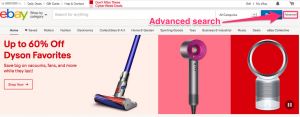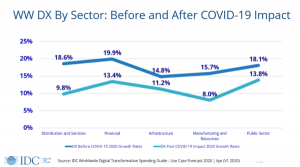
We’re just past the halfway mark in our complete guide to Starting a Business.
This week we’re looking at that make-or-break question for any business, big or small:
What is my target market?
Once you’ve identified your customers you can start to think about how to reach them, how to appeal to them and, once you’ve got them… how to keep them.
Why You Need to Identify Your Target Market
You may be wondering why you even need to define your target market. After all, surely it’s better to keep your options as open as possible. Maybe you even believe that you have a product or service that could appeal to anyone. Unfortunately, that’s rarely true.
We all wear underwear but not everyone is able or willing to drop $ 50 on a pair of designer briefs. Despite that Calvin Klein is doing fine.
The truth is that our pool of potential customers is never quite as deep we would like to believe, so careful diving in.
That’s okay though. In fact it’s a good thing.
Check out the key word above: target. By defining our market we give ourselves something to aim at instead of swinging around blindly popping off shots in every direction.

3 reasons to identify a target market:
- Honing your offering. You should already have identified a problem that your product or service seeks to solve but in identifying your target market you can start to discover whether the cost of your offering, pricing structure (up-front, subscription, results-based) and other aspects (such as delivery) match the means and needs of your market.
- Defining your marketing plan. As a new business owner your marketing budget is likely to be limited. By defining your market you can spend more efficiently and ensure that you are using the right channels.
- Estimating growth potential. To truly understand the viability of your business you need to know the size of your market and its growth potential. This should inform every decision you make in regards to your business.
How to Identify Your Target Market
Now we know why we need to identify our target market, let’s get down to the business of narrowing things down. This is what customer demographics is all about.
Here are some key categories you should start with:
- Age bracket
- Gender
- Family status
- Employment status
- Geographic location
It’s best to start with the widest gauge filter first. Depending on your type of business this could be one of a few of things. Perhaps your business is highly gender- or age-specific. On the other hand, if you have a bricks-and-mortar business your most important filter might be geographic.
3 places to get the information you need:
Your network – Whether online or offline, your social and professional networks are an invaluable resource. Use them. Find out what products they use, ask them whether they would use your product, and give away free products for testing and feedback.
Your customers – If you’re already at the stage that you have a product and customers then you have readymade data to work with. Make sure you collect as much as possible. This could be as simple as spending a few minutes chatting with customers in store, short offline and online surveys, and by asking key questions of your Facebook fans and your email subscribers.
Your competitors – It’s rare that your business will have no competitors. So use the data available for your own ends. If it’s a bricks-and-mortar store, visit the location and take notes on the types of customers and the products they purchase. Online, you can check competitor websites and case out their fans on Facebook, Twitter and LinkedIn.
The US Small Business Administration also has a great rundown of the top free sources of official government data to help you get your market research started.
Understanding Your Target Customer
The demographic picture you’ve now developed is a great start but it can only take you so far.
Your potential customer is more than a collection of bare statistics. To really get a clear and useful understanding of your target customers you have to understand what makes them tick.
Whether your business is B2B or B2C, online or off, the type of things you need to know about your target market are broadly similar:
- What problems and challenges they face
- What they read, who they trust and where they turn to for information
- Spending – where, when and on what?
- Where they congregate – both online and offline
- How they talk – the language they use and methods of communication
Pew Research is a fantastic resource for any business owner trying to better understand their target market.

This kind of information is known as psychographics, and in combination with demographic data, it is the key to building a really solid understanding of your customers that will be invaluable to the success of nearly every aspect of your business.
It will inform the way your product or service develops, the way you market your business (both in terms of the tone and channels you use), your dialogue with customers, the timing of offers and promotions, and the future expansion of your business.
The Goal of Defining Your Target Market
Understanding the market for your products and defining your customer base can seem intimidating and time-consuming but remember, this is a long-term process. Start with the basics, even if that’s just a combination of gut instinct, industry knowledge and a small sample size of contacts.
The idea is to build up a picture over time, constantly refining and redefining your target market, even identifying secondary markets, with the goal of finding the most inexpensive way possible to reach the people who want to buy your products.
Do you know who your customers are? Up Next: How to Build a Strong Online Presence for Your Business
(321)









